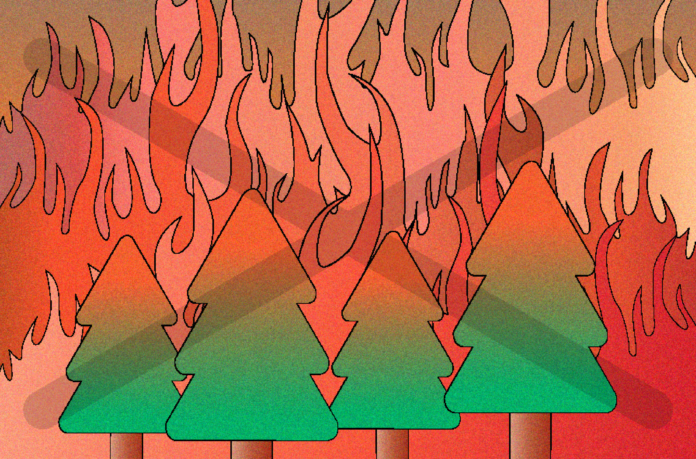Organizations across Yolo County address seasonal increases in fires and continue to address fire prevention
On March 24, the Yolo County Fire Safe Council had its second meeting, during which council members discussed fire preparedness and prevention with other community leaders.
The Fire Safe Council was formed under the Yolo County Resource Conservation District to provide support for wildfire prevention, wildfire response and post-fire recovery efforts by implementing projects in the Yolo County Community Wildfire Protection Plan (CWPP). The meeting and the formation of the Council mark Yolo County’s efforts to address fire safety issues in light of the recent increases in wildfires across California.
California Senator Bill Dodd talked about the importance of the Fire Safe Council at the Feb. 23 introductory Fire Safe Council meeting.
“There is an unfortunate reality of needing to have a Fire Safe Council and these councils can help prepare local communities for the wildfire season,” Dodd said. “These councils can do great work in fuel reduction projects and increasing the insurability of property which is incredibly important.”
In the same meeting, Executive Director of Yolo County Resource Conservation District Heather Nichols explained the importance for the creation of the Fire Safe Council.
“We knew there was a trend toward annual wildfire, particularly west of Winters,” Nichols said. “There was the Monticello fire in 2014, the Rag fire in 2015, the Cold fire in 2016 and then the Winter fire and the nearby catastrophic Tubbs fire in Santa Rosa in 2017. That next year, the Camp fire destroyed the town of Paradise.”
Nichols explained that to address these issues more directly, the Yolo County Resource Conservation District adapted their experiences and ongoing efforts in fire conservation efforts.
“We have over two decades of experience working with residents and landowners and leading stakeholder drive planning, which is what is needed here,” Nichols said. “We’ve done weed management plans for Putah-Cache Creek on farm and ranch technical assistance addressing issues like erosion and vegetation and habitat management. And in town, we do educational workshops with residents.”
The Fire Safe Council is projected to provide input on the draft of the Wildfire Risk Assessment, which is presented by the CWPP steering committee in fall of 2021, Nichols explained.
“[The CWPP steering committee] will provide a draft of the wildfire risk assessment this fall,” Nichols said. “Once that is finalized, the RCD will hold a series of public meetings in Winters, Dunnigan and Esparto to identify projects for the CWPP.”
More information about the Yolo County Fire Council and its mission can be found on its website, along with information on its upcoming meetings, which are open to the public.
In addition to fire prevention efforts at the county level, more localized year-round fire prevention efforts are being led by the UC Davis Fire Services.
Lead Deputy Campus Fire Marshal Jim Patterson explained via email how UC Davis Fire Prevention has been successfully continuing its mission of fire safety and prevention and education despite the mostly-remote nature of campus operations.
“During the fall we still worked with student housing to conduct in-person fire drills for all student resident halls while following all guidelines for face covering and physical distancing,” Patterson said via email. “We are currently working with Student Housing and West Village on a cooking safety campaign targeting unattending cooking. We use Zoom to continue getting the word out.”
In addition to the other fire prevention efforts UC Davis Fire Prevention heads, it works with other campus organizations to ensure fire safety as well, Patterson explained via email.
“Fire Prevention collaborates with the UC Davis Fire Department, Campus Planning and UC Davis Grounds and Landscape Services to identify and provide weed abatement around campus property,” Patterson said via email. “This helps to prevent fire hazards created by vegetative growth and combustible debris.”
Patterson offered up additional tips to use either on or off campus for individuals to stay fire safe.
“At home you should always make sure you have properly working smoke detectors and a fire extinguisher, never leave cooking unattended, and make sure you have an escape plan,” Patterson said via email. “At school or work, know two ways out of the building you are in, the location of fire extinguishers and fire alarm manual pull stations.”
Written by: Yan Yan Hustis Hayes — city@theaggie.org



